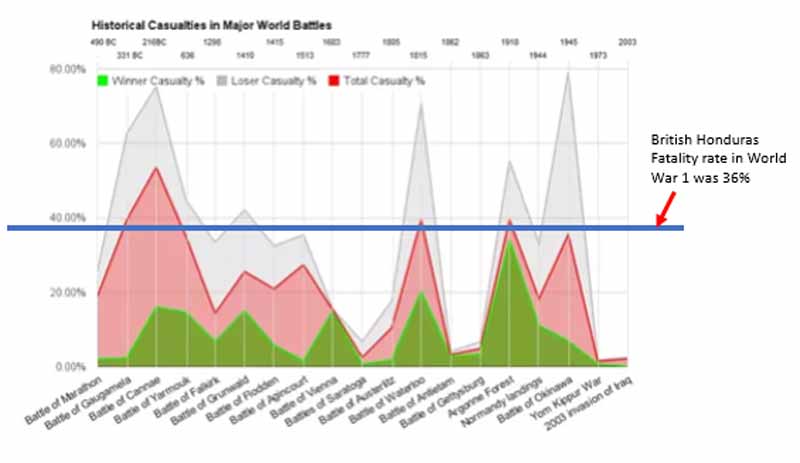The British West Indies Regiment in Mesopotamia
George McDonald is the officer sitting in the middle of his unit in Mesopotamia during the First World War. They were technically part of the British West Indies Regiment.
How the Mesopotamia area in Belize got its name, and that's where the names for Amara and Euphrates avenues and Tigris street came from, after these major rivers in the Middle East.
Louis Swasey served in Mesopotamia in World War 1, I think he was 18.
Lots of people do not even know what there are many many middle eastern descendants in our country that have a full Belizean identity. I have many cousins that are part Arabic. Their father was a very well known Belizean of Arab descent and yes, they all have Arab names.
The ancestors of many Belizeans served in WWI. John Robateau, was one of them. Belize was a very small place then and I am sure most had grandfather's and great grandfathers who served in Mesopotamia during the what was then called the great war.
George Augustus Hulse born December 25, 1897 also served in WWI. My aunt told me stories he shared with her. One about the gypsies who used to visit the army camps in the evenings to read the soldiers palms for a fee of 10 cents.

With the outbreak of the First World War in 1914, thousands of West Indians volunteered to join the British army. They were encouraged to do so by activists like Marcus Garvey, on the basis that if they showed their loyalty to the King they would show they have the right to be treated as equals Initially. Basically, it backfired for many Caribbean Countries including Belize.
In 1915 and 1916 contingents of 129 and 408 respectively left Belize City for the battlefront. These courageous men served in places such a Basra, Tigris, Amara, Bagdad, Mesopotamia and Euphrates.
In 1915, the British West Indies Regiment was formed by grouping together the Caribbean volunteers (15,600 men). Arriving in the war zone, they found that the fighting was to be done by white soldiers, and that West Indians were to be assigned the dirty and dangerous work of loading ammunition, laying telephone wires and digging trenches. Most of them went to war without guns.
After Armistice Day, on 11 November 1918, the eight BWIR battalions in France and Italy were concentrated at Taranto in Italy to prepare for demobilization.
As a result of severe labour shortages at Taranto, the West Indians had to carry out arduous physical tasks. They had to load and unload ships, do labour fatigues, manual or menial labour and perform demeaning tasks like building and cleaning toilets for white soldiers, which all caused much resentment. By 6 December,1918, they had had enough: the men of the 9th Battalion revolted (The Mutiny) and attacked their black officers.
It was into this turmoil that the disgruntled BWIR soldiers began arriving home. There were no welcome parades or celebrations of their contribution to the war effort.
By the time the British Honduras contingent of 339 returned home, their patriotism had turned to bitterness and resentment; the riot of July 8, 1919, in the Old Capital was the result.
Many of the servicemen received house lots between the East and West Collet Canals and thus the names of the streets and the division (Mesopotamia) of the area.
British Honduras had a 36% fatality rate in world War 1. The uploaded graphic shows fatality rates for some other wars. The red area represents over-all death rate. The green area represents the winning side's death rate and the gray area represents the loser's side fatality rate. The Blue line represents British Honduras' fatality rate. It seems a little high to be on the winning side. War is terrible no matter where you are stationed, but It makes me wonder had our men been sent to the front lines if we would have suffered an even larger fatality rate.
Photograph courtesy http://www.britishempire.co.uk
Click here to comment on this picture .
Belize Slideshow